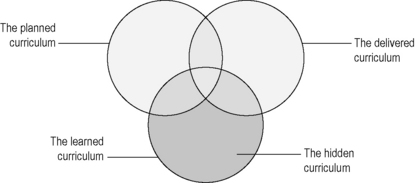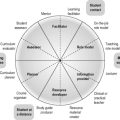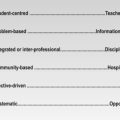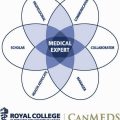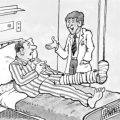10 What constitutes a curriculum?
The concept of a curriculum
Each of these aspects of a curriculum is explored in more detail in Chapter 11. A curriculum can be thought of as made up of all the experiences learners have that enable them to achieve the specified learning outcomes (Grant 2010).
Approaches to the curriculum
• The architect approach. Just as in architecture, work starts here with a full specification of what is to be produced. The focus for curriculum planning is on a detailed statement of the aims of the medical school and the expected learning outcomes.
• The mechanic approach. The car mechanic is concerned with the type of engine rather than the direction in which the car has to travel. The focus for the curriculum planning is on the teaching approaches and the learning opportunities created.
• The cookbook approach. Just as in cookbook recipes with lists and quantities of the ingredients for the cakes and other dishes, a detailed list is made of all the contents that have to go in to the curriculum.
• The railway approach. The railway timetable comprises the routes and times when trains arrive and depart at different stations. In the railway approach the emphasis is on the students’ timetable and their activities and venues at each hour of the day.
• The religious approach. Just as in religion where there is a principle or system of tenets held with devotion, so those responsible for planning the curriculum hold some value or curriculum strategy, such as problem-based learning, to be of supreme importance.
• The detective approach. The emphasis is on identifying problems in relation to the existing curriculum just as the detective has to assess the evidence and diagnose a problem at the scene of a crime.
• The bureaucratic approach. Here a major factor is the rules and regulations, sometimes imposed from outside, that govern an institution or school and its curriculum.
• The magician approach. In this approach a curriculum appears just like a magician produces a rabbit out of a hat. It is not clear how the curriculum has been derived or who has been responsible for its production.
The planned, the delivered and the learned curriculum
A distinction can be made between:
• The ‘planned’ curriculum that is documented and agreed by the curriculum planners and teachers and embodies their intentions and aspirations – the curriculum on paper.
• The ‘actual’ or ‘delivered’ curriculum, which is the reality of the students’ or trainees’ experiences and what is delivered or happens in practice – the curriculum in action.
• The ‘learned curriculum’, which represents the students’ knowledge, skills and attitudes that result from their learning experience.
Part of the ‘learned curriculum’ is the ‘hidden curriculum’. This can be thought of as the outcomes that are not part of the explicit intentions of those planning a curriculum. These may be knowledge and skills but more importantly may be attitudes and beliefs. The formal curriculum is described in the course documents, prospectus and study guides. The hidden or unofficial curriculum is determined by the educational environment and relates to the students’ experiences as described in Chapter 18. There may be conflict, particularly in relation to ethical decisions, between the hidden curriculum and what they are taught in the formal curriculum.
Reflect and react
1. How familiar are you with the details of your students’ curriculum? Do you contribute to the curriculum’s on-going evolution?
2. How would you characterise the approach adopted in the development of the curriculum?
3. How important in your context is the ‘hidden curriculum’ and how closely aligned are the planned and the delivered curriculum?
Davis M.H., Harden R.M. Planning and implementing an undergraduate medical curriculum: the lessons learned. Med. Teach.. 2003;25:596-608.
A description of the approach to curriculum development adopted in one medical school.
Grant J. Principles of curriculum design. In: Swanwick T., editor. Understanding Medical Education: Evidence, Theory and Practice. Chichester: Wiley-Blackwell, 2010.
Hafferty F.W., Castellani B. The hidden curriculum. A theory of medical education. In: Brosnan C., Turner B.S., editors. Handbook of the Sociology of Medical Education. London: Routledge; 2009:15-35.
Harden R.M. Approaches to curriculum planning. Med. Educ.. 1986;20:458-466.
An account of the different approaches to curriculum planning introduced in this chapter.

